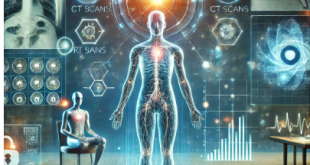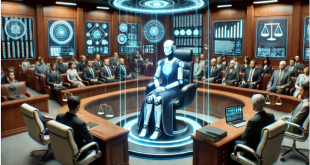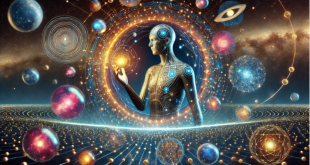Artificial Intelligence has transformed the scene of 3D technology
It stands at the forefront of transformation from animation, architecture, game development, and health sectors. It can generate lifelike virtual environments while simplifying complex designs, thereby enhancing creativity and efficiency. But with these advantages comes the potential for severe risks that cannot be overlooked: risks that span from ethics issues to security concerns.
Here‘s a closer look at the disturbing side of AI in 3D.
1. Deepfakes and Misinformation
AI-powered 3D technology is making it easier than ever to create hyper-realistic deepfakes.
Problem: AI uses machine learning to generate fake 3D avatars, or reedit videos to make it seem like someone said or did something they never said or did.
Impact: Deepfakes have spread misinformation, destroyed reputations, and fed political propaganda.
Example: A realistic 3D deepfake of a world leader could spark panic or influence public opinion based on fabricated scenarios.
The accessibility of tools to create deepfakes makes it a growing concern, especially with limited regulations in place.
2. Intellectual Property Theft
AI in 3D technology raises questions about ownership and intellectual property rights.
Problem: AI-generated 3D models or animations can replicate existing designs or artistic styles without proper authorization.
Impact: This affects creators and companies whose work is being reproduced or altered without permission or remuneration.
Gaming industry: AI would be able to duplicate proprietary game characters, designs, or environments, potentially giving rise to lawsuits over copyright.
The line between inspiration and theft grows hazy with the power of AI
3. Privacy and Surveillance
AI-enabled 3D imaging technologies are increasingly used for surveillance and security purposes; however, their misuse risks:
Problem: AI might produce very high-resolution 3D mappings of environments or individuals without regard for privacy.
Consequences: Governments or other organizations might leverage this capability to track people in three-dimensional space in real time, violating civil rights.
Illustrative Example: The merging of AI and 3D imaging may yield facial recognition systems sophisticated enough to track an individual across different locations.
Unfettered use of this technology could mean dystopian surveillance on steroids.
4. Weaponization of AI-Generated Models
AI in 3D technology can be used for ill purposes, including the development of arms or hazardous simulations.
Problem: Cybercriminals or bad actors may use AI to design 3D-printed weapons for successful bypasses of traditional regulations and manufacturing constraints.
Impact: This increases the accessibility of untraceable weapons and contributes to global security threats.
Example: AI may come up with intricate designs for firearms or drones that function properly but are hard to trace.
The proliferation of such technology amplifies risks in the wrong hands.
5. Ethical Concerns in Virtual Reality (VR)
AI-generated 3D virtual realities are becoming increasingly immersive, and this raises ethical issues.
Issue: Realistic simulations can manipulate emotions, desensitize people toward violence, or even blur the line between reality and virtual experiences.
Impact: It may create unhealthy dependencies on virtual worlds leading to psychological and social consequences among users.
Example: Manipulation or even propaganda or addictive gaming experiences can be made possible through AI-generated 3D characters or scenarios.
As virtual reality becomes more pervasive, these ethical dilemmas will only become more intense.
6. Environmental Impact
The application of AI in 3D technology requires massive processing capability, causing an environmental issue:
Issue: The consumption of energy from AI-driven rendering processes and 3D simulations contributes to carbon emissions.
Impact: Scaling these technologies without sustainable practices will amplify climate change.
For instance, generating 3D films or virtual environments for metaverse platforms can take thousands of hours in computationally intensive rendering.
Balancing technological progress and environmental responsibility is a challenge that must be faced up to.
7. Lack of Regulation and Oversight
The development of AI and 3D technology has emerged much faster than the development of corresponding regulatory frameworks.
Problem: The absence of guidelines for AI applications in 3D technology allows nefarious and dangerous use to find their loopholes.
Impact: Creators and companies will misuse the loopholes, and proliferation and exploitation will occur on a large scale.
Example: Unauthorized copies of people or brands could be manufactured using AI systems without any consequence.
Governments and industries must develop guidelines to stop misuse but encourage innovation.
8. Accessibility to Dangerous Tools
The better user-friendly AI and 3D technology appears to be, the more accessible misuse is to those without skill.
Problem: Easy-to-use software enables less-than-qualified users to design seemingly realistic 3D models or simulations for nefarious purposes.
Impact: This democratization of harmful tools means a greater chance of widespread abuse.
Example: Someone with little experience might use AI to create fake products that quality checking would circumvent and thereby harm consumers.
Accessibility is a positive trend but requires stricter checks and education.
Managing the Threat
To manage the threats, developers of AI and 3D technology have to be proactive.
Create Ethical Norms: Industries must establish norms for the use of AI in 3D technology ethically.
Security Increment: Implement sophisticated detection systems that could track cases of misuse by detection of the same, such as deepfake detection algorithms.
Educate Users: Raise awareness about dangers and responsible usage of AI-driven 3D tools.
Introduce Regulations: Governments should formulate policies concerning privacy, intellectual property, and other ethical issues pertaining to AI and 3D technology.
Encourage Sustainability: Innovation of greener practices into the reduction of environmental impact of AI-driven 3D applications.
Conclusion
AI in 3D technology holds vast promise for creativity, innovation, and progress. In contrast, its darker sides–privacy violations, misinformation, security threats, and ethical dilemmas-dictate attention to them. By acknowledging dangers and setting up protective measures, society can use AI in 3D technology responsibly in the service of humanity‘s best interests.


